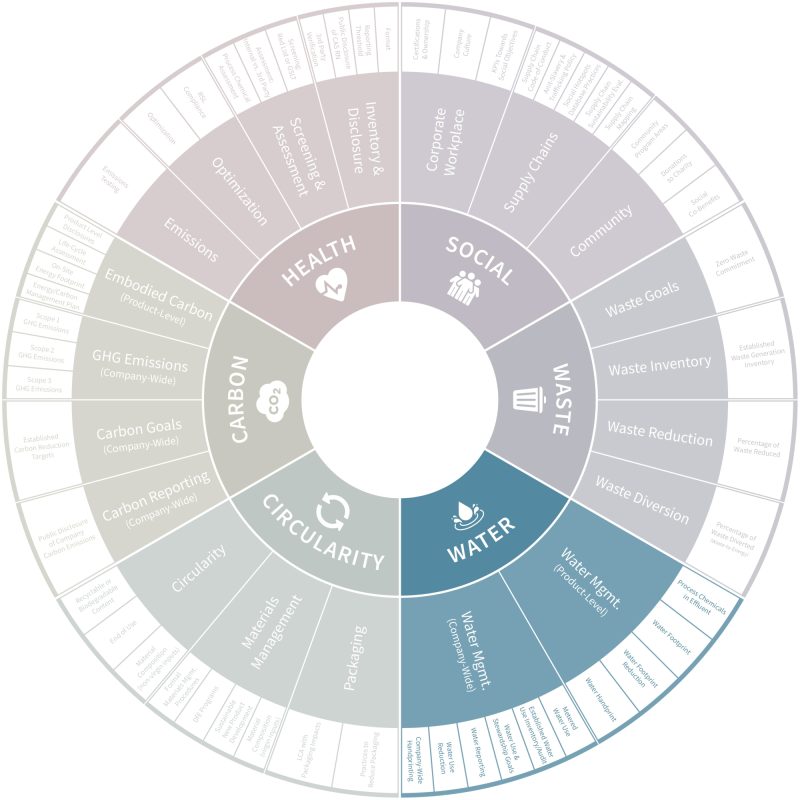WATER
The condition of the water in our communities directly impacts human and ecological health. Decades of environmental racism has resulted in marginalized communities being most impacted by the disproportionate exposure to toxic pollutants as a result of corporate interests and environmental policy.
Historically, manufacturing has been positioned in areas where regulations allow for unethical water usage- whether this means directly dumping contaminants into watersheds and devastating local communities, or producing with excessive amounts of water and creating situations of water scarcity.
Today, communities and activists are coming together to push for a change in outdated attitudes and technology in an effort to bring about responsible and conscious water management. As a designer, it is crucial to make informed choices when it comes to knowing where and how a product is produced.
KEY PRODUCT CONSIDERATIONS

Effluent Management
Does the manufacturing process produce toxic chemicals that can contaminate waterways and ecosystems? Are there regulations and audits in place at the site of production to ensure proper wastewater management, and has the manufacturer recently received violations?
Metering Usage
Has the manufacturer assessed the product-level water footprint and company-wide water usage?
Assessment, Planning & Goals
Did that assessment lead to a water management and conservation plan in order to set water use and stewardship goals?
Reductions
Have those goals led to actual reductions in both the product-level and company-wide water footprint?
‘THERE’S SOMETHING IN THE WATER’
Watch the trailer for the Netflix documentary There's Something In the Water, which unpacks the effects of water pollution and toxic waste on local communities.
FURTHER READING

Also In This Series: SOCIAL EQUITY, WASTE, CIRCULARITY, CARBON, HEALTH
What Is In Your Water?
Everyone deserves access to clean water. A greater understanding of the entry points of highly fluorinated chemicals into consumer products can support us in making informed decisions to reduce harmful exposure.
Join Our Academic Network
Get Access to our carefully researched and curated academic resources, including model syllabi and webinars. An email from an academic institution or a .edu email address is required. If your academic institution does not use .edu email addresses but you would like to join the network, please contact healthymaterialslab@newschool.edu.
Already have an account? Log in